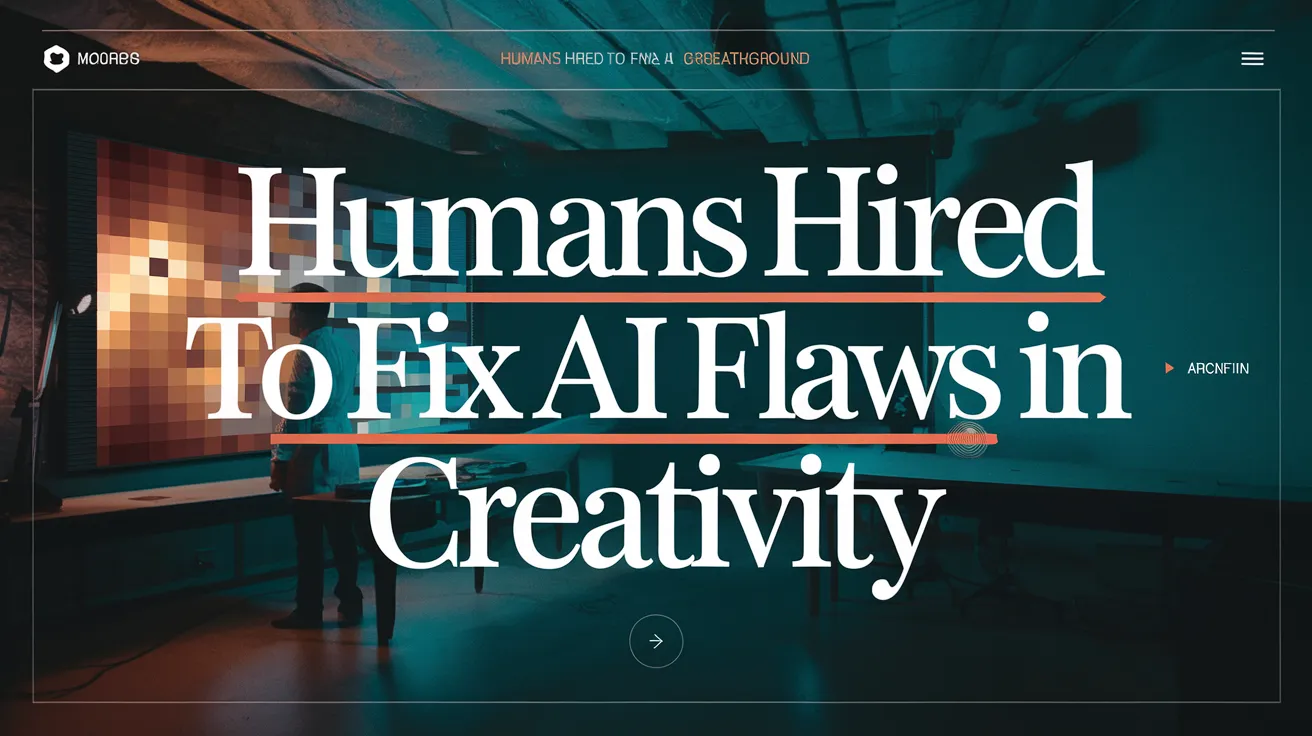Humans Hired to Fix AI Flaws in Creativity

The rise of AI technology, initially threatening the job security of creative professionals, has ironically resulted in increased demand for their expertise. Graphic designer Lisa Carstens from Spain finds herself busier than ever as she helps clients rectify flawed logos generated by AI.
Clients often present her with AI-created designs marred by uneven lines and confusing text, while pixelation issues arise when these images are enlarged. Carstens notes the challenge of managing clients’ expectations, particularly from those frustrated by AI’s inadequate output: “There are people that are aware AI isn’t perfect, and then there’s people that come to you angry because they didn’t manage to get it done themselves with AI.” In these situations, her role is to correct these issues and provide a polished outcome.
The New Job Category in AI
This need for human intervention marks the emergence of a new category of work born from the generative AI boom. Many creative professionals are now tasked with enhancing AI outputs. For instance, freelance writers are being engaged to refine AI-generated text, while artists are hired to fix distorted AI images. Software developers also find themselves correcting buggy applications produced by AI tools.
A recent MIT report reveals that AI has displaced more outsourced workers than permanent employees, but it also highlights that 95% of businesses’ generative AI pilot projects yield little return on investment. According to the report, the main obstacle in scaling AI isn’t infrastructure or regulation, but rather the learning curve required to properly integrate AI into workflows.
Transforming Roles with AI
The AI-generated logos clients bring to Carstens might require only minor tweaks, yet some need complete redesigns, which can take longer than if she’d created them from scratch. As many gig workers express, these types of tasks often pay less than traditional jobs within their field since clients underestimate the work involved.
Kiesha Richardson, a freelance writer from Georgia, shares a similar experience; half of her current projects involve tweaking poorly written AI-generated articles that lack a human touch. “I am a bit concerned because people are using AI to cut costs, and one of those costs is my pay,” she reflects, highlighting the precarious balance between AI advancements and human job security.
Market Reactions and Trends
According to freelance platforms like Upwork, Freelancer, and Fiverr, there is a significant increase in demand for creative roles as companies look for workers who can skillfully adapt to AI technologies. For instance, Fiverr reported a 250% increase in interest for specialized tasks such as web design and book illustration.
Matt Barrie, CEO of Freelancer, points out that brands are experiencing backlash when customers realize a product is AI-generated. This underscores a growing desire among consumers for authentic human creativity over formulaic AI outputs.
The Future Landscape of Work
The landscape of jobs produced by AI is evolving, with workers needing to master collaboration with technology rather than oppose it. Todd Van Linda, an illustrator in Florida, notes that clients often prefer human-created art due to its ability to convey unique narratives, something AI struggles to achieve. He emphasizes the importance of individual artistic expression in the wake of AI’s rise.
Harsh Kumar, a web and app developer from India, echoes these sentiments and suggests that while AI can enhance productivity, it cannot entirely replace human workers—particularly in complex development scenarios where human ingenuity is paramount.
As AI continues to infiltrate creative fields, the road ahead will require workers to embrace lifelong learning, develop AI literacy, and adapt to the changing workflow dynamics. The key takeaway is clear: engaging with AI is crucial, and the role of human workers will increasingly revolve around enhancing and refining the outputs of AI, rather than being replaced by them.